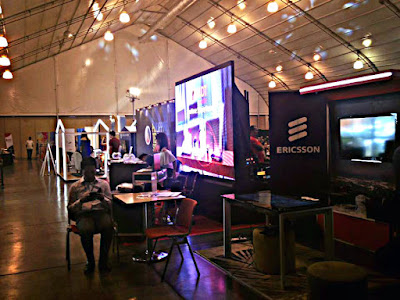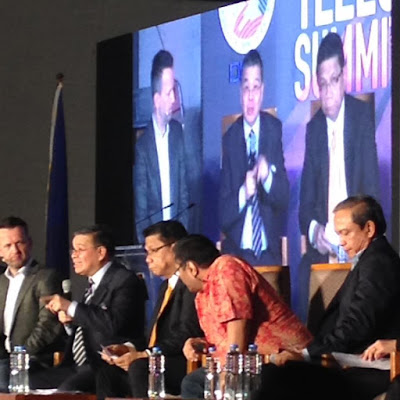 |
Ericsson believes that connectivity can make positive socio-economic and environmental impacts around the world.
The technology challenges Ericsson Research have been focusing on in the last few years are:
-
data analytics in operation support systems
-
intelligent decision support
- mission-critical cloud and the internet of things in the context of network operation centers
THE CONNECTED MEGA-CITY
THE CONNECTED MEGA-CITY
An important aspect of Ericsson's research is looking into what these new technologies mean for
people and societies, hence The Connected Megacity.
Overview: (material from Ericsson)
"Today, we see a transformation in the way people live and congregate around the world; more and more people are becoming city dwellers and projections indicate that from 50% today, they will be 70% by 2050. A considerable share of the population will mostly form part of very large urban areas - the so-called mega cities.
ICT solutions and the Networked Society are
important components when finding holistic and balanced views to city
life management. There is a need for new urban models to tackle social,
economic and environmental challenges in sustainable
ways.
In all this, we, the citizens are central, and not only because it is our quality of life that is hanging in the balance but also because we can contribute with information and innovation as well as help support the city by changing/adapting our behavior.
With focus on technology enablers, hereby gives a
glimpse of the Connected Megacity, by going through three city
scenarios, namely the Safe City, the Creative City and the Greener City.
The Resilient/Safe City.
One important aspect of such a city is its ability to respond to an
unexpected event in a
resilient way. Road accidents for instance, unfortunately can and will
happen despite everybody’s best intentions. What’s important, apart from
minimal casualties, is their impact on the city operations and its
citizens and how quickly the latter can return
to normal operations. From a technical point of view, we believe that
through analyzing and combining data feeds and situational knowledge,
patterns of behavior can be identified. These can then be encapsulated
together with expert knowledge to lead to informed
actions and intelligent recommendations. This way, available resources
(public services, people, sensors, devices, etc.) can be used in an
effective way to understand and mitigate the situation; something that
requires interoperability and cross-domain communication.
The Creative/Proactive City scenario
highlights how the connected city can learn from previous experiences
and take proactive measures
before an event. This is of course done through a combination of
technical enablers, but also with the support of the citizens through
various incentives and mechanisms for raising their awareness. If, for
example a rock concert or another major event is scheduled
to happen in the coming days, city operations can be based on analyses
of previous similar events It may be decided to increase the public
transportation, allocate more police resources and give people
motivation to behave in ways that enable the event to
flow more smoothly. City operations can also increase the network
capacity around the event arena, give people recommendations to offers
and promotions or increase their physical event experience through
digital services in different ways.
The Greener City,
which we find it to be one step closer to the vision of sustainable
cities, illustrates how energy use and load can
be predicted, for example, based on weather forecasts. This enables the
city, its citizens and industries to adapt their behavior and
reschedule production and consumption to avoid serious power shortages.
The smart grid is one domain where the Internet of Things is gaining momentum and the use of wireless technologies is well suited to providing last-mile connectivity to grid devices. The capabilities of LTE, such as very low latency, Quality-of-Service and high throughput wrapped in a future-proof global standard, are opening up new areas for applications in mission critical M2M communications. However, M2M traffic characteristics differ greatly from smart phone traffic. Therefore, it is important to understand how to take advantage of the advanced features of LTE in order to optimize the network for specific applications like the smart grid.
By means of these three scenarios, Ericsson hopes to have exemplified how megacities can respond to some of the events as they occur and prepare for future scenarios, while taking into account the relationships between diverse stakeholders. All linked with how these responses can be aligned with a more sustainable development."
The smart grid is one domain where the Internet of Things is gaining momentum and the use of wireless technologies is well suited to providing last-mile connectivity to grid devices. The capabilities of LTE, such as very low latency, Quality-of-Service and high throughput wrapped in a future-proof global standard, are opening up new areas for applications in mission critical M2M communications. However, M2M traffic characteristics differ greatly from smart phone traffic. Therefore, it is important to understand how to take advantage of the advanced features of LTE in order to optimize the network for specific applications like the smart grid.
By means of these three scenarios, Ericsson hopes to have exemplified how megacities can respond to some of the events as they occur and prepare for future scenarios, while taking into account the relationships between diverse stakeholders. All linked with how these responses can be aligned with a more sustainable development."
*Blogger's note: The Philippine Telecoms Summit 2017 targeted solutions that we need for a better future. The Ericsson demo shows that that a well planned city can surely help us proper, and it is a must to take a closer look about how our cities develop, not just for telecommunications, but for all needs, such as road, facilities, and more. As we look forward to a bright future, we should take action, and plan properly.




